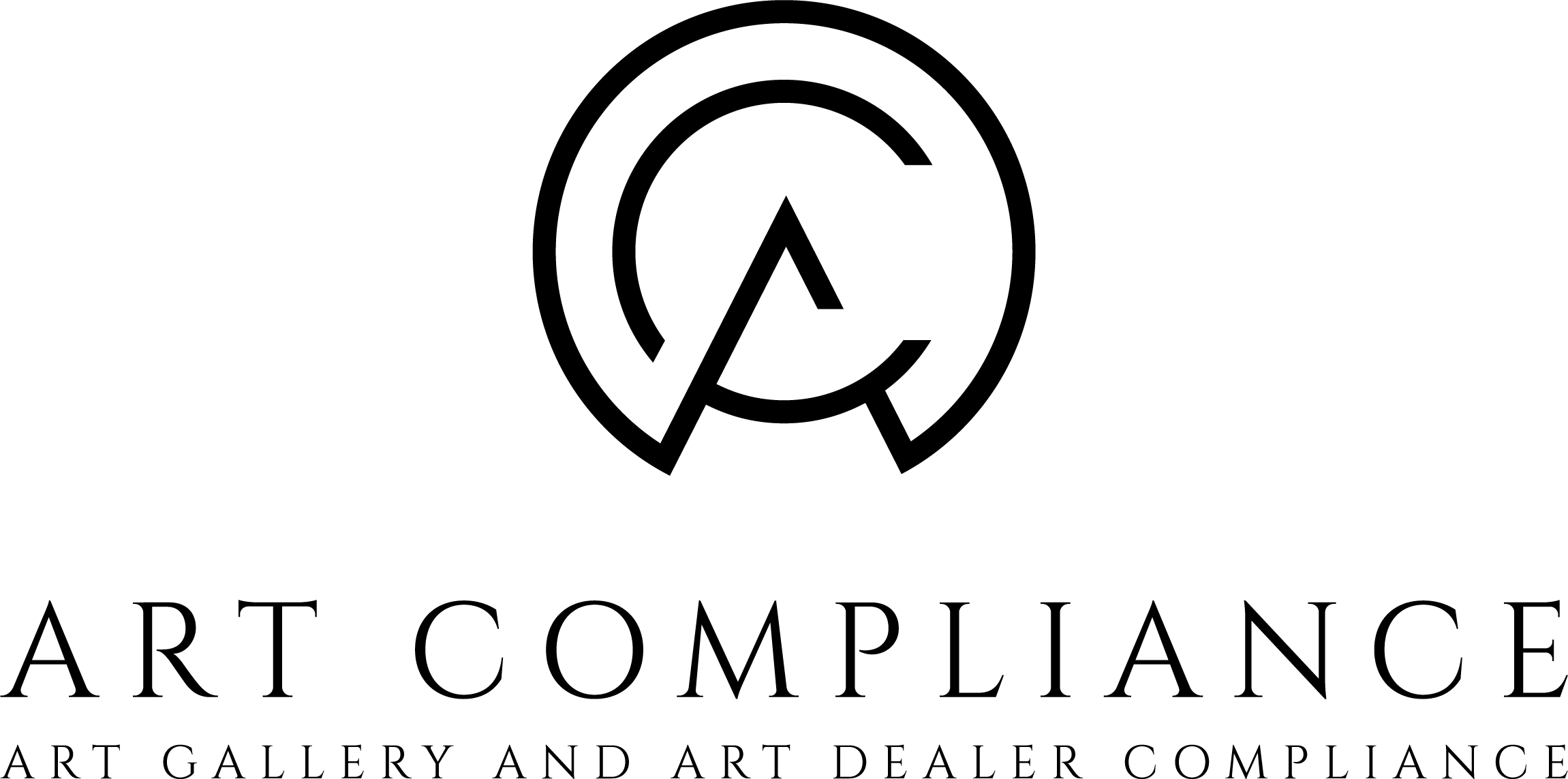5th Money Laundering Directive
5th Money Laundering Directive (MLD5) was adopted by the EU, and new legislation was passed into UK law by amending various statutes such as Money Laundering Regulations 2017 (MLRs) and Proceeds of Crime Act 2002.
These changes come into force on 10 January 2020, and bring about a number of significant implications for art market participants. The regulation of the art market adds a layer of additional responsibilities on all participants of the art market that handle customer transactions with amounts of EUR 10,000 or more.
Specifically, the legislation stipulates that any persons trading or acting as intermediaries in the trade of works of art, including when this is carried out by art galleries and auction houses, where the value of the transaction or a series of linked transactions amounts to EUR 10,000 or more; as well as persons storing, trading or acting as intermediaries in the trade of works of art when this is carried out by free ports, where the value of the transaction or a series of linked transactions amounts to EUR 10,000 or more.
Art-market participants working within the UK are now required to meet the Anti Money Laundering legislation requirements and will be required to have systems and controls to identify and combat attempts of money laundering and terrorist financing. Failure to comply with the regulation carries a penalty of two years’ imprisonment, a fine, or both. The systems and controls required include: undertaking an internal risk assessment and creating an internal AML policy; undertaking initial and ongoing client due diligence (CDD); documenting CDD carefully and maintaining records; training staff; and appointing a nominated officer to make reports to the National Crime Agency.
This may seem like a paradigm shift in operating an art business, however, this area of compliance is not new and can be easily navigated with a little help from experts.
There is no denying that the introduction of the Money Laundering Regulation (MLR) will impact the day-to-day running of art businesses. At Art Gallery Compliance we group the transition process from the pre-MLR time into two stages.
The first obvious stage is becoming compliant, and this means getting a risk assessment done, introducing MLR policies and procedures, putting systems in place, appointing a Nominated Officer, registering with NCA and training staff.
Needless to say, this is not a straight-forward process and can involve up to 4 different suppliers and takes quite a lot of dedicated focus from senior management or proprietor to put in place.
The second stage is introducing compliance into your day-to-day operations, which means ensuring processes and procedures are being followed, any suspicious activity reported to the Nominated Officer for examination and possible submission of a Suspicious Activity Report(s) (SARs) to the NCA. Ensuring all customers with transactions or linked transaction of EUR 10,000 or more are Identified and Verified, as well as checked against AML lists for Politically Exposed Persons, Sanctioned and Special Interest Persons (PEP, Sanctions and SIPs checks). In some cases, your staff will need to obtain a source of wealth documents, and more guidance on this will need to be provided.
So, as an art gallerist or a dealer, how do you ensure that your business is compliant while maintaining the focus on the art market, rather than compliance.
As always there is more than one way to achieve this objective. One is expensive and it entails hiring a consultant to put all this place and ensuring a smooth handover. The other is to work with an integrated specialist like Art Gallery Compliance that will deliver a transparent service on a monthly basis ensuring you become and stay compliant.
Art Gallery Compliance model relies on providing long-term value by carving out compliance into a separate low-touch workflow. This way gallerists and dealers can focus on what they do best, while Art Gallery Compliance manages compliance with minimal interruption to the day-to-day running of an art business.
About Art Gallery Compliance.
Art Gallery Compliance was started in consultation between art dealers and fintech & compliance specialists to ensure that there is an easy way for the art community to meet new regulatory challenges. We leverage the latest technology in MLR and our network of compliance specialists and advisors to create a simple workflow for Art Galleries and Art Dealers to follow. On top of this, we provide essential components for art market participants to become compliant and meet regulatory obligations on an ongoing basis.
Operating principles of the company are centred around protecting customer privacy and intellectual property, which in our case is mostly data.
The main differentiator of Art Market Compliance is that we demystify MLR for art market participants and provide an essential service at very competitive prices. This approach helps ensure that the art community continues to focus on building strong customer relationships, while we take care of compliance obligations.
Find out more at http://artgallerycompliance.com/
Or contact am@artgallerycompliance.com
